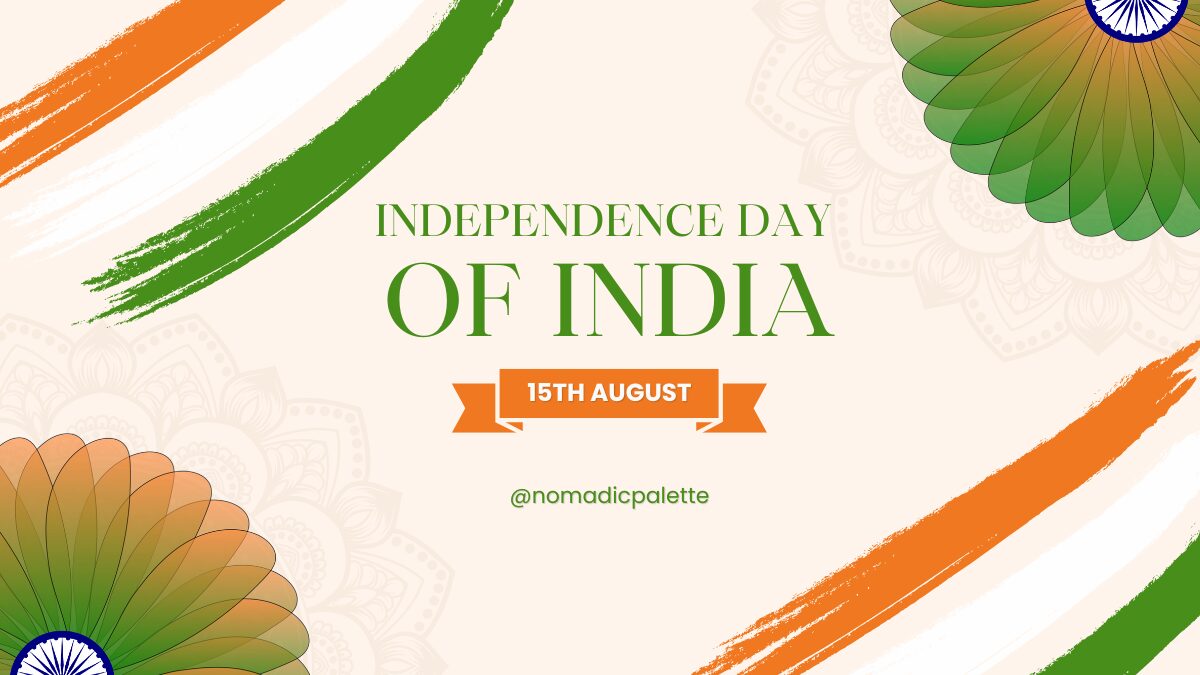
The country celebrates Independence day on 15th August. The nation honors the freedom fighters for their valiant efforts. This will be our 77th Independence day. On August 15, 1947, India declared its independence from British colonial rule, and the leaders of the country took control.
On August 15, in conjunction with these nationwide festivities, the Prime Minister raises the Indian flag from the historic Red Fort in Delhi. Additionally, the day also marks the anniversary of the partition of the subcontinent into two countries, India and Pakistan, which took place at midnight on August 14–15, 1947.

The Rise of British Raj and East India Company
The British came to India for trade purposes and established the English East India Company. Later, they went on to extend their dominance over other affairs like politics and economy and colonized India. British rule in India commenced in 1757 after the British victory at the Battle of Plassey. The English East India Company began to assert control over the country. The East India Company governed India for a century. However, following the Indian Mutiny of 1857–58, the British replaced it with direct rule, commonly known as the British Raj. Consequently, this transition marked a significant shift in the administration of the country.
Why did British gave up India?: The Independence Day
The Indian independence movement gained momentum during World War I. Independence was the result of a collective effort by numerous freedom fighters, each contributing their unique efforts toward the cause.
Additionally, the weakening of British military and economic power after World War II played a crucial role. India achieved independence in 1947. Also, Due to the Naval Mutiny, Britain decided to leave India in a hurry because they were afraid that if the mutiny spread to the army and police, there would be large-scale killing of Britishers all over India. Hence, Britain decided to transfer power at the earliest.

Lesser Known facts about Indian Independence:
Consequently, in this blog, we will highlight some lesser-known facts about Independence Day.
Only Karnataka manufactures the Flag of India.
The Karnataka Khadi Gramodyoga Samyukta Sangha (KKGSS) in Dharwad, Karnataka, manufactures and supplies the Indian flag.
At the time of Independence, India did not have a national anthem.
Rabindranath Tagore composed “Jana Gana Mana” in 1911. India officially adopted it as the National Anthem on January 24, 1950.

India adopted “Vande Mataram” as a National Song.
Bamkin Chandra Chatterjee composed “Vande Mataram,” which India adopted as its National Song on January 24, 1950.
In 1907, people hoisted the first unofficial flag of India.
In 1907, people hoisted the first unofficial flag of India at Parsee Bagan Square in Calcutta (now Kolkata). It featured three horizontal stripes—red, yellow, and green—with the words “Vande Mataram” written in the center.

The first British Unit and Royal Air force sailed from Bombay
The monument commemorates King George V and Queen Mary’s arrival at Apollo Bunder during their visit to India in 1911. Once India achieved its long-fought independence, the withdrawal of British forces began. Subsequently, this marked the end of an era and the beginning of a new chapter for the country. On August 17, 1947, the first army units and a substantial contingent of the Royal Air Force departed from Bombay.

On July 22, 1947, India formally adopted the present flag of the country.
India formally adopted the present flag, which features saffron, white, and green stripes along with a 24-spoke Ashok Chakra, on July 22, 1947. Additionally, this design was chosen to represent the country’s new identity. Subsequently, the country raised the new flag on August 15, 1947, to symbolize its newfound independence.
The speech “Tryst with Destiny” marked Independence Day.
Jawaharlal Nehru, the country’s first Prime Minister, delivered the renowned “Tryst with Destiny” speech to celebrate India’s independence. Specifically, he gave this historic address at the stroke of midnight on August 14, marking the transition from British rule to independence.





